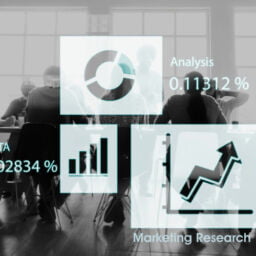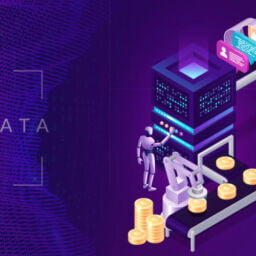
The previous blog explored the benefits of travel data analytics and how web scraping can improve the process. Today, we make it concrete and see the top data analytics usage examples in the travel industry, from airlines to travel agencies and trip data analytics activities.
How Airlines Use Data Analytics
The airline business is technologically advanced and complex. Data analytics is the best (and must-have) tool to remain competitive by improving operations, enhancing customer experiences, optimising pricing, and making data-driven decisions.
Let’s expand on this topic by discovering 11 main data analytics applications in the airline industry.
1. Demand Forecasting
Accurate demand forecasts help you optimise flight schedules and capacity planning. Airlines can use historical booking data, seasonal trends, and market dynamics about specific routes and flights.
2. Pricing Optimisation
As an airline business manager, one of your priorities is revenue maximisation through competitive yet profitable offerings. Data analytics allows you to set ticket fares in real-time by employing dynamic pricing models that analyse factors such as demand, seat availability, booking patterns, and competitor pricing.
3. Route Planning and Network Optimisation
Do you want to make the right decisions about opening, closing, or route adjustments? Travel data analytics helps you determine the most profitable routes, hub locations, and flight schedules by analysing passenger’s demand and profitability.
4. Customer Segmentation
Personalised marketing, loyalty programmes, and tailored services are essential to stand out from your competitors. The only effective way to do that is a data-driven approach. Your airline company can analyse customer data to segment passengers into different categories based on travel behaviour, loyalty, demographics, and other segmenting factors.
5. Customer Experience Improvement
Satisfied clients are returning buying customers. They know what to expect from your company and are sure they won’t be disappointed. On the other hand, customers don’t choose you only for the fare. They choose you for the experience.
Therefore, you must know your customers to enhance, for example, services, cabin configurations, amenities, and crew interaction. Data analytics helps you gather passenger feedback through in-flight surveys and social media sentiment analysis.
6. Maintenance and Reliability
In airline transportation, safety is everything. And keeping costs low is equally important. Well, you can use predictive maintenance analytics to monitor the health of aircraft components, predict maintenance needs, and reduce downtime.
7. Effective Crew Scheduling
Travel data analytics can be an effective tool to minimise labour costs and disruptions. It ensures that flights are fully staffed while adhering to labour regulations.
8. Baggage Handling and Tracking
According to the SITA’s Baggage IT Insights 2023 report, 26 million bags went missing at airports in 2022. This highlights the need for digitalisation and automation of baggage operations to reduce the mishandling rate (up 74.7% compared to 2021). Data analytics helps you track baggage movements to reduce lost luggage incidents and improve the baggage handling processes.
9. Fuel Efficiency
On July 2023, the world jet fuel consumption was recorded at 21,111.88 Thousand kilolitres. With price growth and raised attention to environmental impact, fuel efficiency is more important than ever. Your airline company can analyse flight data, weather conditions, and aircraft performance to optimise fuel consumption, reduce costs, and become more environment-friendly.
10. On-time Performance and Safety
Analytics tools provide real-time data about weather, flight delay predictions, and analysis of routes, procedures, and documents. This helps make informed decisions during flights and take proactive measures for impact minimisation on passengers. It also assists in keeping compliant with aviation regulations, safety standards, and reporting requirements.
11. Cargo Management
The air cargo industry accounts for 35% of world trade by value. Despite that, the industry faces several challenges connected to global economic stagnation, inflation, wars, and general uncertainty. But technology and data analytics can keep your air cargo business afloat by optimising cargo operations, capacity planning, pricing, and tracking.
Travel Agency Data Analytics

With mass transportation, including commercial flights, travel agency services grew substantially by 9.9% in market value from 2014 and counted 168,897 travel businesses worldwide in September 2023.
Do you work in this industry? You can benefit significantly from trip data analytics. So, keep reading to learn how to enhance your travel agency operations, improve customer experiences, and make data-driven decisions.
1. Segmentation, Recommendations, and Personalisation
Data analytics can help you segment your customers based on their demographics, travel preferences, interests, and booking history. A precise segmentation can then support you in:
- Creating tailored marketing campaigns.
- Designing effective loyalty programs with personalised offers and incentives.
- Personalising travel packages, services, and destinations with the best-matching attractions, local events, and climate.
2. Pricing, Revenue and Inventory Management
How can you determine the optimum price and inventory for maximum revenue? Custom web scraping and data analytics tools allow you to monitor, gather, and analyse historical booking data, trends, and competition (price, marketing, promotions) to implement dynamic pricing strategies.
This way, your company can adjust fares based on demand, seasonality, and competitor pricing the same way an airline business or e-commerce would.
Data analytics can also help you forecast demand for specific destinations and adjust inventory accordingly, including flights, hotels, and activities. This is essential if reducing overbooking and underutilisation is among your priorities (and it should be).
3. Customer Feedback Analysis
Today, knowledge means everything and knowing your customers doesn’t make any exception. So, would you like to address issues raised by customers effectively? Wish you to enhance your service quality and reputation?
Start by analysing customer reviews, surveys, and feedback to gain insights into customer satisfaction and identify areas for improvement.
4. Marketing and Advertising
Like many other businesses, I’m sure you can’t afford to waste money and resources. Data analytics comes in handy also with your marketing activities to allocate your budget to the most successful campaigns and channels.
So, instead of guesswork, you can use advertising analytics tools or cloud services to calculate your travel marketing campaign effectiveness by tracking metrics, such as click-through rates, conversion rates, and customer acquisition costs.
5. Data Security, Compliance, and Fraud Management
Data analytics can ensure customer data is handled securely in compliance with data protection regulations. It’s also an effective tool to automatically protect your travel agency and customers from defrauding. You can do that through fraud detection algorithms that identify and prevent fraudulent bookings or transactions.
6. Reporting and Visualisation
They say: “It’s better to show than tell”. In this case, visualising data can make it more accessible and actionable. In effect, analytics applications offer dashboards and reports to communicate key performance indicators (KPIs) to management and stakeholders. They even allow you to create custom visuals and charts.
Whether you are an airline company, travel agency, or hospitality business, trip data analytics can’t be ignored anymore and should be part of your daily workflow.
WebRobot can assist you in integrating your IT system with a universal data service platform (or data extraction tool) and data mining and analytics software (or design custom data solutions) to monitor, aggregate, and eventually gain insights and actionable data for a profit-oriented travel company.
Coming next:

Best travel data types to collect…and how to automate travel data analytics

Stay ahead: subscribe to our newsletter
Disclaimer: Always respect user privacy and copyright, follow ethical data scraping practices, and abide by the terms and conditions of the websites or platforms you’re scraping data from, as unauthorised data extraction may lead to legal or privacy issues. Therefore, ensure that your data collection and analysis methods are compliant. Furthermore, data can be noisy, unstructured, and constantly changing. Therefore, use a tool or service that can handle the volume and variety of data from multiple web sources.
This article is for information purposes only and not intended as legal advice. Consult a lawyer for complete knowledge of the local and international laws.
Featured Image by Freepik

















I’ve been surfing online more than 3 hours today, yet I never found any interesting article like yours. It?s pretty worth enough for me. In my opinion, if all web owners and bloggers made good content as you did, the net will be much more useful than ever before.
Here is my website URl – ????????